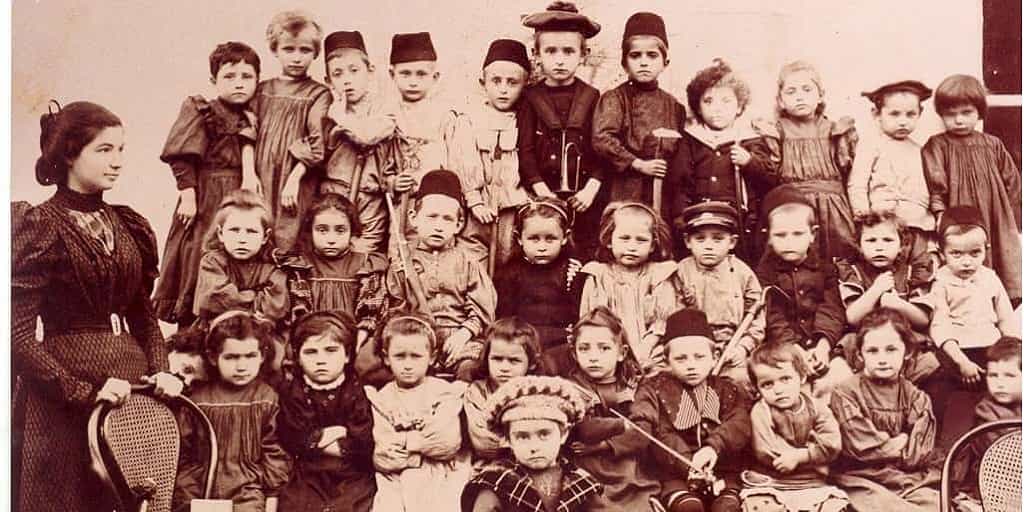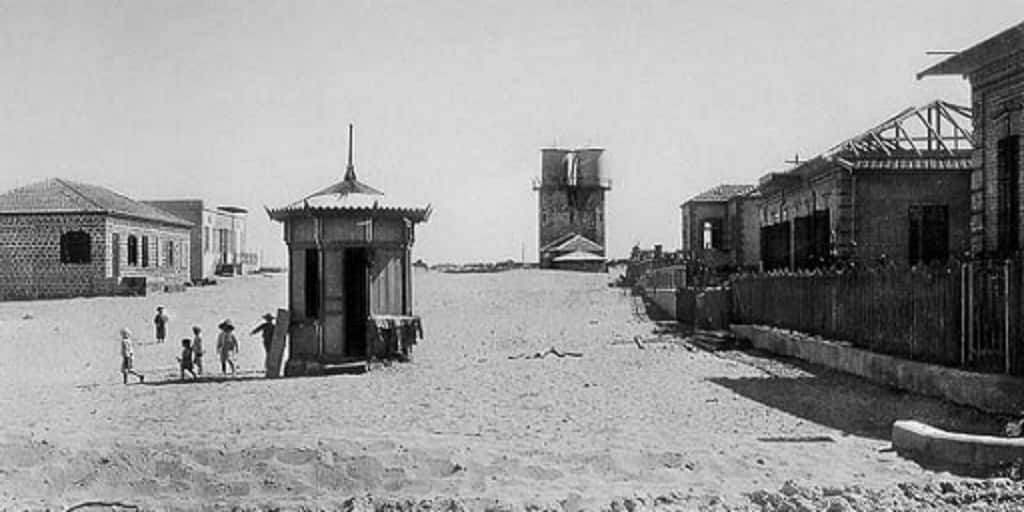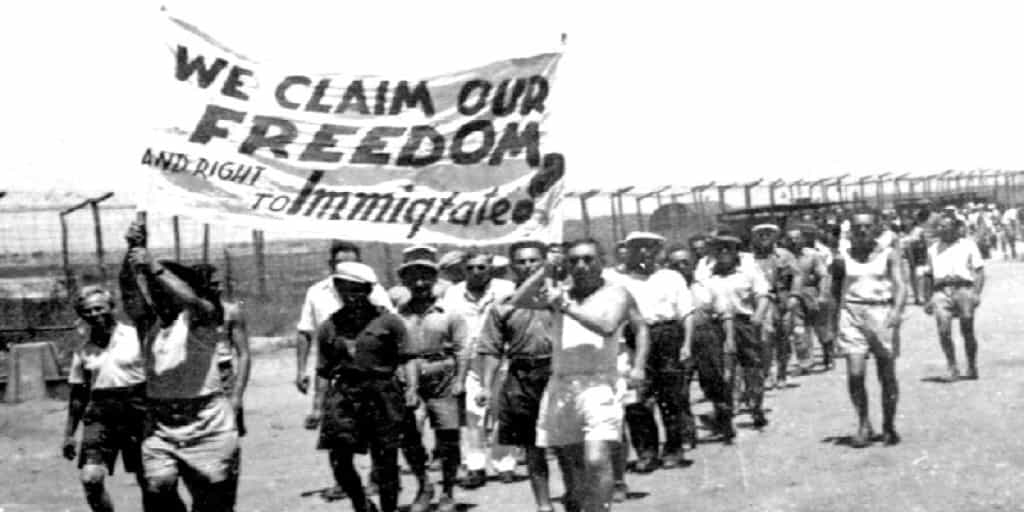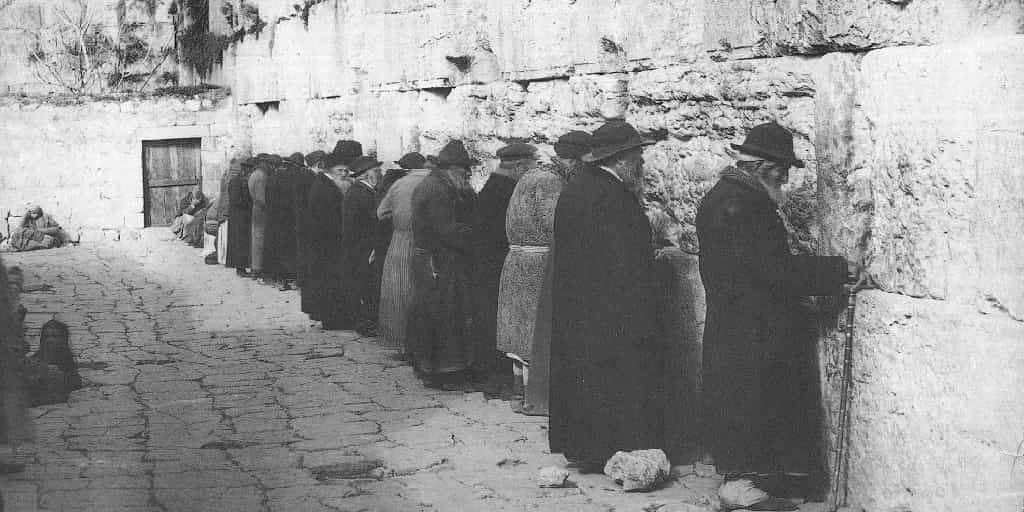When we look at Israeli society today, it can be easy to think how all of it got started, from the tall buildings of Tel Aviv to the flourishing desert communities of the Negev to the holy sites of Jerusalem. We can’t forget that it all began with five waves of Jewish immigration to the land before the State of Israel was born. But what was the Fourth Aliyah to Israel all about?
It began with the First Aliyah in 1882, followed by a busy Second Aliyah beginning in 1904. The Third Aliyah lasted from 1919 to 1923. The Fifth Aliyah is still to come.
And then there is a fourth wave of Jewish immigration to the Land! Beginning in 1924, 60,000 Jews move to Palestine. What happens?

Background: Why come here?
During this time, Palestine becomes the main option for Jews wanting to leave Europe because there is nowhere else to go. The U.S. closes their doors to further immigration after having millions of immigrants enter the country. Don’t forget that World War I has ended the previous year, in 1918. It leaves many homeless and those wanting to start a new life in its absence.
Most of the immigrants coming here are middle class folks from Poland. They will move to the cities, like Tel Aviv, rather than to the kibbutz or the moshav of the Second and Third Aliyah.
We have to remember several things in order to understand this Fourth Aliyah to Israel:
- A Peace Conference was held in 1919, with the beginning of the British Mandate. The Zionists sent representatives to make sure that Zionist goals are on the agenda. The British made a lot of promises.
- That same year the King- Crane commission was to Palestine by President Wilson. After scooping out the situation, the commission recommended not getting behind the Zionist cause, and rather support an Arab state. However, the British still instated the Balfour Declaration.
- In 1920, politically minded Arabs were disappointed after Viesal was kicked out of Damascus. After the Nabi Musa (Prophet Moses) Festival Arab Riots broke out.
- In 1921, Arab Riots broke out in Jaffa after a fight broke out between two Jewish groups. The Arab workers of the Port thought the Jewish were attacking Arab workers, and went to attack the Jewish workers.
- In 1922, Winston Churchill, secretary of the Colonial Office of the UK, made decision. It was time to limit the number of Jews who can enter Palestine
And so several things result:

- Abdullah ibn Hussien will get TransJordan. This was a real shock for some of the Zionist movement because it was their perspective that TransJordan was part of Palestine. Arabs weren’t thrilled about King Abdullah either because he was a Bedouin from Arabia.
- Jewish immigration will be limited (High Commissioner Herbert Samuel is behind this, and it was linked the number of immigrants in based how much the country could be absorbed)
- Students and religious Jews could come without limitation if they could prove there was an institution to support.
- If Jews had a relative in the country, or had been here and then left, they could come to the land.
- Workers could come in order to create competition and help the economic situation.
Two years later the Fourth Aliyah to Israel began…
What happens during the Fourth Aliyah?
The years of 1924 to 1929 were quiet years with no violence. The British modernization led to the communities throughout the land growing drastically.

Because of the British modernization, Pinchas Rutenberg created an electricity system on a national level, not just in his first station of Naharyim. The British helped deepen and industrialized the ports of Jaffa and Haifa. The Haifa Port wasn’t a deep water port until the Brits built it up in the 1930’s. EVERYONE benefitted from this: Jews, Arabs, and the British.
Some of the projects were Zionist projects that came with British concessions. This was a great period for the Zionist movement because they could build a great deal during the Fourth Aliyah to Israel. The Fourth Aliya was also called the Kiosk Aliyah because many Jewish immigrants opened small businesses. The city of Tel Aviv doubled in size to 40,000 people!
One of the most successful British projects was that of improving healthcare. They cleaned up the country, improved the healthcare system, and built hospitals. Because of their work, there were less stillbirths, less mothers dying in child labor, lower child mortality rates, and more. In 30 years, the Arab population doubled, and not mainly because of immigration to the land.
** That is an important note: Arabs were immigrating to the land at the same time Jews were. With the increase in industrialization, Arab populations came to seek more work and opportunities to put food on the table. Jews and Arabs were immigrating to the same place at the same time!
The businesses and projects in the Fourth Aliyah to Israel led to a boost in the economy. However, this will not last forever. From 1926 to 1928, there was an economic decline in the land. Tel Aviv had 40% unemployment!
The Riots of 1929
In 1929, tensions between the Arab and Jewish populations had reached its boiling point. The Western Wall, or Kotel, was a major issue at the time. The prayer area was three meters by twelve meters because of a Muaram (North African Muslims) neighborhood led up to that point.
The Muslims said that the Jewish praying bothered them and the British needed to make them stay quiet. The Muslims then proceeded to disturb Jewish prayer by walking their livestock through the area. Ze’ev Jabotinsky created guards to stop disruptions, so Muslims created a guard system as well.
The Jews then put up a separation for men and women to pray according the Orthodox Jewish theology. The Muslim community claimed that the Jewish community was trying to take over the Temple Mound.
We have to understand something: this didn’t make any sense. And because it didn’t make sense, the two communities spun into a frenzy. The Zionist movement wasn’t a religious movement and furthermore, theologically speaking Jews wouldn’t have gone up to the Temple Mound with a Temple standing on it.

With all of this tension building, a Jewish boy accidently kicks a soccer ball into a Muslim courtyard. When he tried to get the ball back, he was murdered. The Beitar group demonstrated during the funeral because of how the boy was murdered. Following those demonstrations, the Muslim community demonstrated. This led to riots across the country.
The riots in the city of Hebron were especially violent, including rape and death. But it is important to know the Arabs of Hebron didn’t participate in the violence. In fact, many Jews were saved and protected by their Muslims neighbors.
The Legacy of the Riots
It could happen because of religious tensions that didn’t exist in 1948. But we saw that tension again in 1967 and in 2000. It became a national memory or trauma for the Zionist movement and the State of Israel. In addition, it was a turning point for Zionists because the British didn’t do anything anywhere in the country.
In 1929, the Fourth Aliyah to Israel ends, with 60,000 more people living in the land.
Conclusion
The Fourth Aliyah to Israel was one of contradictions. On the one hand, business and national project unfolded. On the other hand, there are economic challenges the whole world is facing.
From one side, the Arab and Jewish communities were finding ways of coexisting and working together (like in Hebron). But from the other side, violent tension was boiling over (like with the 1929 Arab Riots).
On the one hand, there is an increase in Jewish immigration, while on the other hand there is Arab immigration to the land as well.
What we can see for sure, is that the people moving here love the land, and believe it is a holy, special place with a potential that reaches the sky.





